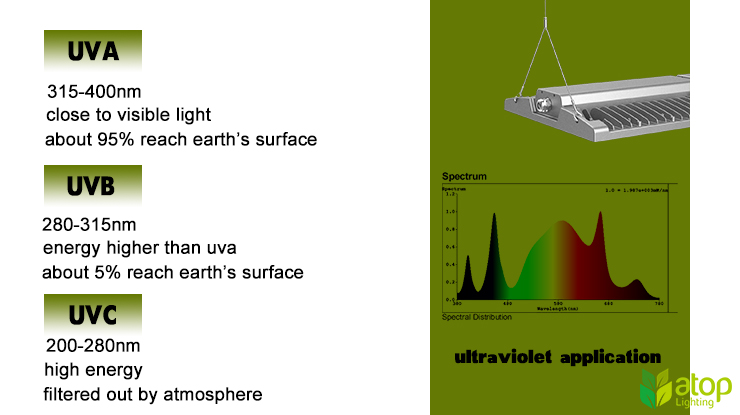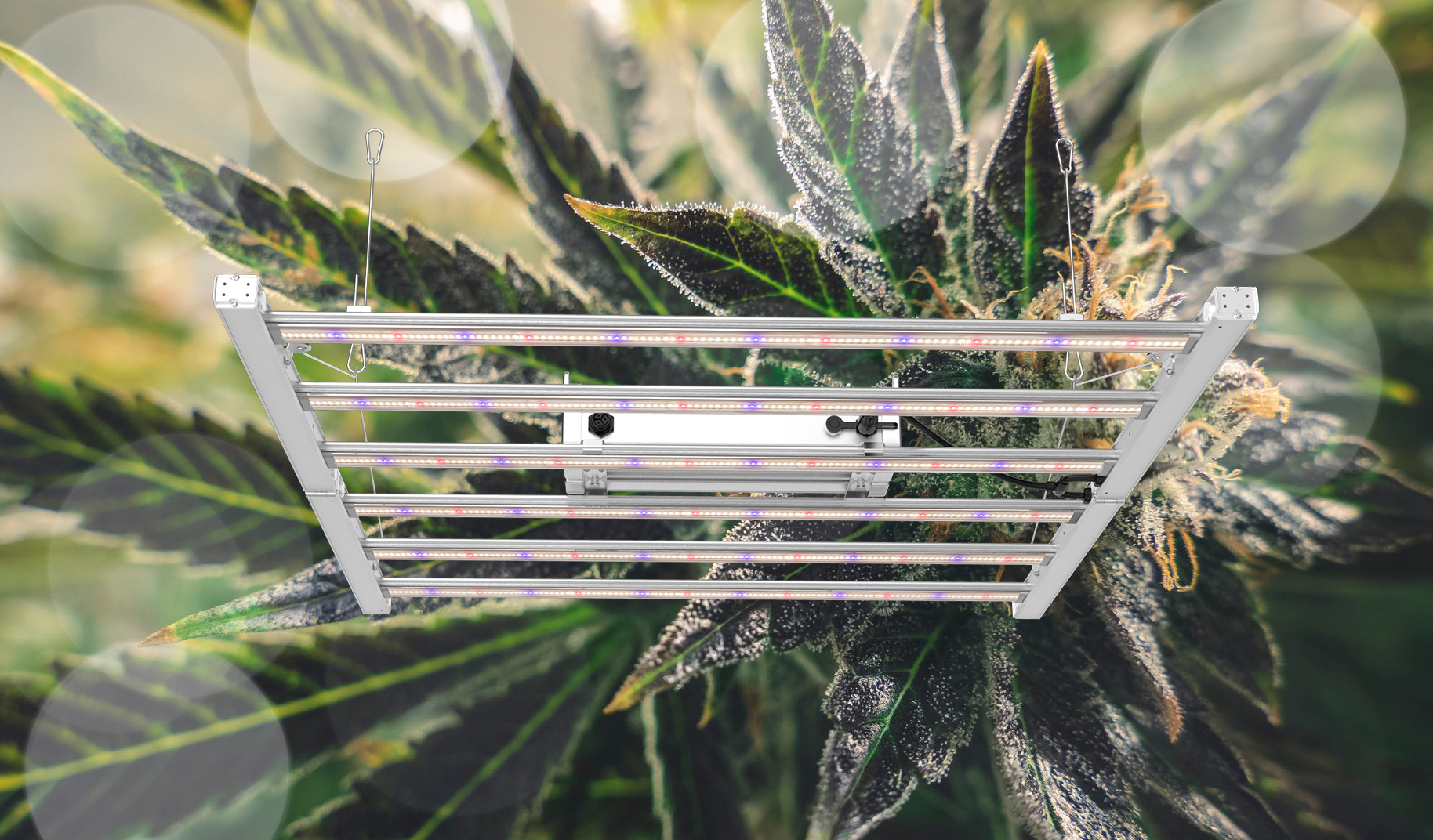The Reasons for Including UVA and UVB in LED Grow Light
In agricultural production, the illumination condition is directly related to the efficiency and benefit of agricultural production. Therefore, understanding, utilizing and regulating spectral components has always been an important content of agricultural research. Especially in modern agricultural production, the regulation of light environment by means of artificial lighting has become an inevitable choice for the development of facility agriculture. The impact of visible light on crops is the first to be studied. However, in addition to visible light, the impact of ultraviolet (UV) light on plants is also a subject worth of researching in-depth and it has been going on for decades.
Are all range of UV light wavelength beneficial to the growth of crops?
Obviously, the answer is no. In nature , almost all UVC is filtered out by our atmosphere and doesn’t reach earth’s surface. Moreover, UVC energy is too high, will directly damage the crop, such damage is destructive and not recoverable . As a result, research on the effects of UVC on crops has been reduced.
So which UV light can be used?
For plants, there are two relevant types of UV light: UVA and UVB. UVA is the lowest energy UV and ranges from 400 nm to 315 nm. UVB is higher energy than UVA and ranges from 315 nm to 280 nm. Below we will further explain why we include UVA and UVB in led grow lights from the view of the effects of UVA and UVB on crops .

Why include UVA in LED grow light
UVA is the closest to visible light of all UV lights, and its energy is relatively low compared with the other two kinds of UV lights, UVB and UVC, so it does less harm to plants and animals. As the saying goes, "all existence has its reason". UVA accounts for about 95 percent of the ultraviolet light that reaches the ground in nature, but UVB is much smaller than this proportion, only about 5 %. from the fact above, It is not difficult to draw a conclusion that UV light is involved in the growth of plants in nature.
Crops have already formed their own unique, environmentally adaptive growth genes after a long time of modification in nature. It is obvious that the grow light which only use visible light as spectrum component in the greenhouse does not really simulate the light environment as the nature. So adding UVA to led grow light can replicate the natural habitat of plants.
In addition, research based on UVA has also found that if used in the right amount:
- Including UVA in led grow light can increase the content of CBD and THC in cannabis crops.
- UVA can increase the anthocyanin content in lettuce.
- UVA can increase nutrients in vegetables, making them sweeter and more productive.
- UVA can accelerate germination and make seeds better adapted to high-intensity lighting.
Why include UVB in LED grow light
Plants are highly sensitive to UVB. In plants, UVB damages cell membranes and all organelles within the cell, including the chloroplasts, mitochondria, and deoxyribonucleic acid (DNA) within the nucleus. Damage to these cell organelles directly or indirectly affects basic plant metabolic processes, such as photosynthesis, respiration, growth, and reproduction.
But that's not to say there are only harmful effects and no good effects on the changes of plants in UVB light. The effect of UVB varies with intensity and duration of irradiation and stage of plant development.changes are unknown. Numerous agricultural crops can synthesize simple phenolic compounds and flavonoids that act as sunscreens and remove damaging oxidants and free radicals. In addition, with the aid of external substances, the tolerance of crops to UVB also can be improved. For this purpose. We've specially sorted out some of known possible benefit of UVB light on plants.
Sensitivity to UVB radiation varies widely among different plant species and cultivars of the same species. Studies on physical or physiological reasons for differences in tolerance to UVB radiation among species need further attention. So just because one species has poor UVB tolerance does not tell that UVB is harmful to all species. There are differences in the effect of UVB to plants between different species.
Plants exposed to UVB can also stimulate production of secondary metabolites such as phenolics and jasmonic acid. If these phenols and acids are exactly what people want to extract from crops, then it is indeed possible to consider using plant lamps with UVB in the spectrum to increase crop yields and thus achieve the value of crops.

There are also reports of dramatic increases in essential oil production by flowering crops grown under grow lamps with precisely calculated amount of UVB illumination.
UVB can delay flowering in a few plants. The research value of this property lies in how to use it properly so that crops can be matured in different stage. For fresh food, simultaneous ripening of large quantities may be a disaster for producers. Because these products are not easy to save, plus, prices are likely to fall sharply.
Deoxyribonucleic acid (DNA) is considered the primary absorbing compound in the cell in the UVB region of the spectrum. However, as mentioned above, UVB also will damage deoxyribonucleic acid (DNA). The product of gene recombination expression after destruction is worth studying. It is also likely that proteins, membrane lipids, and other essential substances in the cell will be altered toward a positive direction.
UVB also will decrease the individual leaf area and total canopy leaf area. If you do not want to affect the normal growth shape of the crop, the time of UVB exposure can be arranged after the end of the vegetative growth period, or even in the middle and late flowering period. UVB doesn't necessarily make your plants grow bigger and faster. But it may change the potency, taste or medicinal quality of crops.
Conclusion
Although UVA does little harm to plants and animals, it should be used in an appropriate amount. Too much or too little may affect its inducing effect. While UVB is far more destructive than beneficial. But If used properly, It also may help boost yields and change crops for the better as well. In the use of them, “seek profits while avoid harms” should be the accepted guideline for many agricultural growers and agricultural lighting facility research companies.

